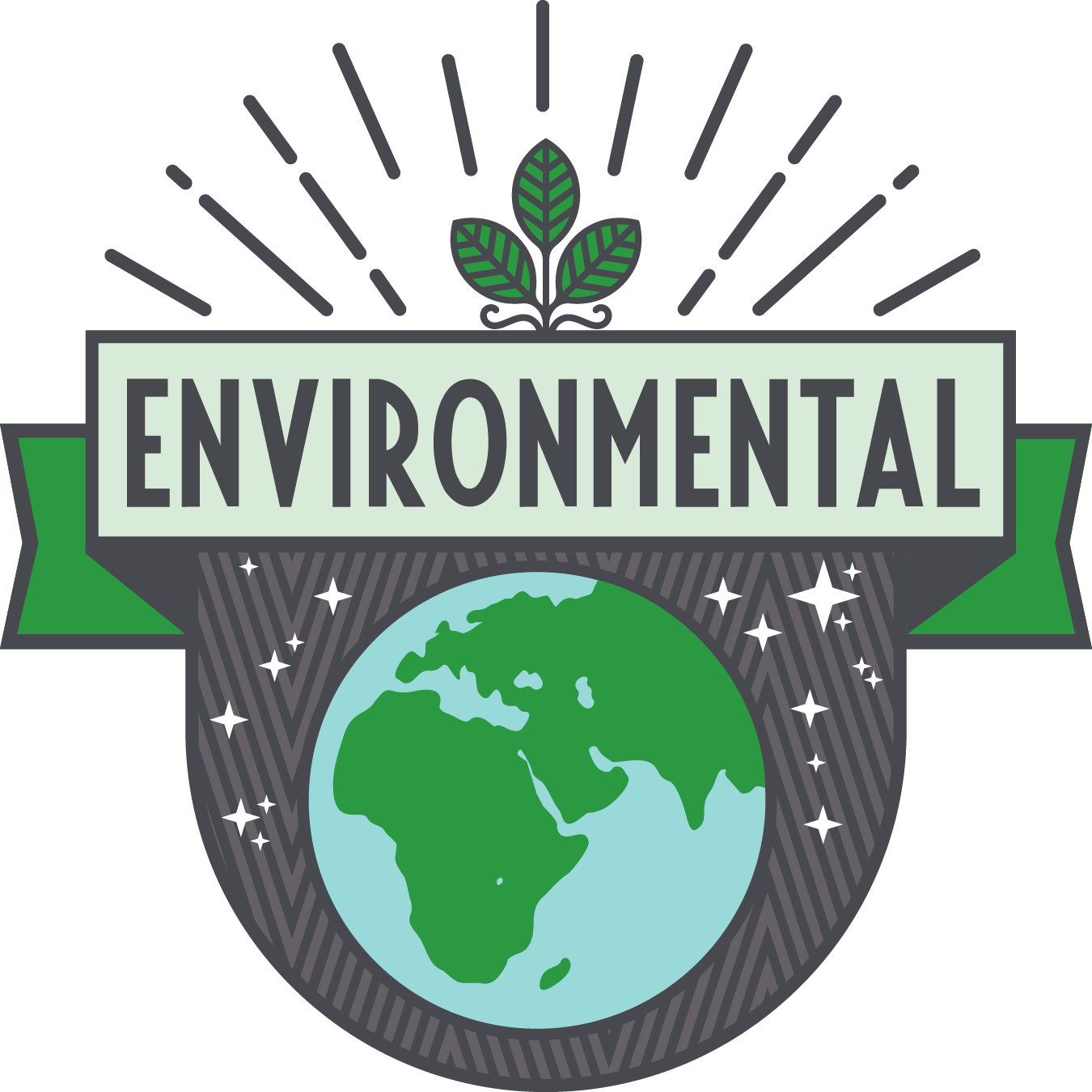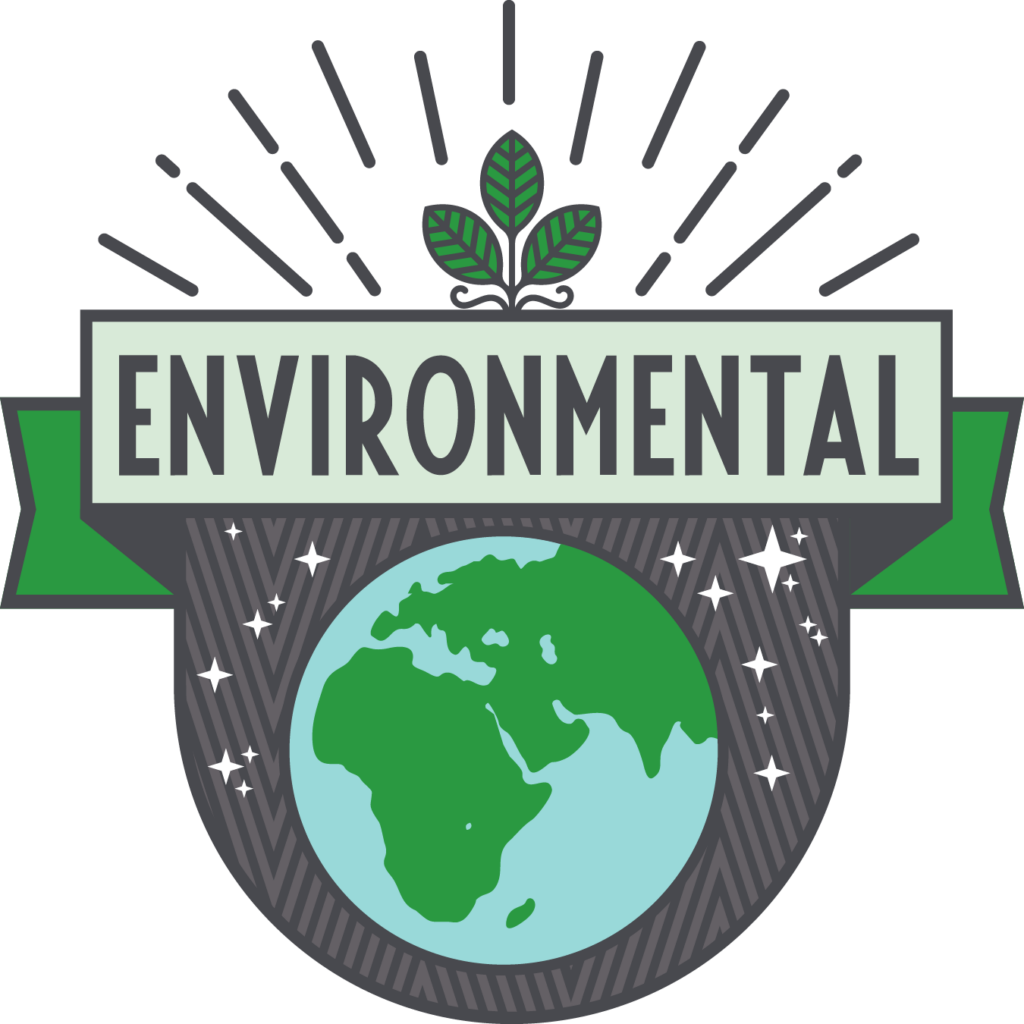As the populations in California’s towns and cities continue to increase, the need for sustainable urban and community forests also increases. Adding nature back into the paved and developed environments in which we live, work and play helps to reduce a number of the issues that effect our quality of life. Trees provide a number of benefits, including improving public health, providing economic opportunities and advantages as well as supporting a healthy environment that makes all of our lives better.

Urban Forests Improve Public Health and Safety
The more green space in your community, the better the community’s health.
“…people who live in communities that are walkable, have access to bike trails, and are near parks and green space have higher levels of health than those in communities lacking those amenities.” Dr Richard Jackson
3
Urban forests and green spaces encourage use. Residents will recreate and exercise more in areas with an urban forest. Having green spaces around us makes us feel like getting out and walking more, which is a great form of exercise and positively affects behavior that helps combat obesity.
Help us live longer
Green spaces help reduce health complaints which in turn adds years to our lives, helping us live longer.
Help us breathe easy
Trees filter pollutants from the air. Kids living in areas with more street trees have less asthma.
Everybody who can see trees has less stress.
Just the sight of trees and greenery has been found to reduce stress levels. Research shows views of trees improves recovery from stress within 5 minutes as indicated by changes in blood pressure and muscle tension.
Urban forests help reduce anger and aggressiveness.
Forests – and other natural, green settings – can reduce stress, improve moods, reduce anger and aggressiveness and increase overall happiness.
Urban forests reduce mental fatigue and help us concentrate
When we can see trees, we feel calmer. Being calm help us to concentrate and pay attention to the tasks we are performing, whether it be office work or classroom activities.
Experience of the natural world helps restore the mind from the mental fatigue of work or studies, thus office plants and views from windows help reduce stress, boost productivity, improve job satisfaction, and help workers stay more attentive.
12
Patients in hospital rooms with views of trees heal faster.
Studies have shown that when patients in hospitals can see trees from their rooms, they recover faster.
Shade us from the sun
Trees protect us from the sun on hot days, helping to cool us off and also by providing a screen from ultra violet radiation (UVR) that can cause skin and eye damage. Children and youth are particularly vulnerable because they rarely demonstrate ‘shade seeking’ behavior. At school, children can spend up to 25% of their time outdoors, typically during the period of highest UVR exposure — between 10 a.m. and 4 p.m. One of the most effective means of protecting students from UVR is to plant shade trees where they play and congregate – around playground equipment, near asphalt play areas, and along sports fields.
Streets lined with trees are safer.
Trees near roads help slow down traffic by making the road appear as a street where people live and not a freeway. Slower traffic makes it safer for us to walk and also for other road users like bicycles. It is also safer for drivers.
While not completely understood, the presence of street trees may provide an “edge effect” or psychological cue to drive more slowly. Fewer crash incidents, and less severe injury outcomes, are associated with slower vehicle speeds.
Trees reduce noise population.
Tree-lined streets are quieter, with less traffic noise. Excessive noise can lead to health complications. Too much noise can make us feel more stressed and makes it tougher to concentrate and to get a good sleep. Trees create a sound buffer and help to reduce noise pollution which can be especially helpful if our homes are near busy roads.
Make places feel safer
Trees make us feel at home so we spend more time outside and walk more often. This also helps keeps us safe, as more people are out and about around us.
The link between urban forestry and urban greening with healthier social systems is surprisingly straightforward. The presence of trees and well-maintained lower understory vegetation can transform barren spaces lands into pleasant, welcoming, well-used places. Such common spaces serve to strengthen ties among residents, increase informal surveillance, and deter crime, thereby creating healthier, safer urban communities.
10
Reduce crime
In housing developments with gardens and trees, crime rates drop. Places with high levels of green space had less property crimes (break-ins, vandalism, etc) and less violent crimes than those surrounded by empty, open spaces.

Provide Economic Opportunities and Returns
Trees provide jobs and create business opportunities.
From the skilled work of certified arborists (who plant, prune and treat trees) to entry-level jobs in nurseries and landscaping companies, urban forestry employs more than 62,000 Californians and added over $3.9 billion in value to the state’s economy.
Trees generate a high return on investment
Across the state, the value provided by trees through environmental benefits such energy savings, air pollution reduction, and runoff reduction has been quantified by research undertaken for the USDA.
In regions throughout the state one large tree will provide environmental and other benefits over its lifetime to the value of:
$5,170 – 466% – Northern California Coast
$3,880 – Inland Empire
$2,730 – Inland Valleys
$1,780 – Desert Southwest
$1,680 – Northern Mountains and Prairies
Would you like to find out the value that trees near you are providing? Go to the tree benefits calculator and fill in some details about your climate region and about the tree itself.
Shade from an urban forest canopy cools our cities and reduces energy use.
Shade provides many benefits. Using trees to provide shade reduces the need for air-conditioning. At a national level, researchers estimate that planting three additional trees for each building in the United States, or 100 million mature trees growing around residences could save about $2 billion annually in energy costs (Akbari et al. 1988, 1992; Donovan and Butry 2009)
Trees planted on the west side of a home can reduce the summertime electric bill up to $47 a year because air conditioning is used less often5. The shading benefits are not just for homeowners, and are applicable to buildings and the built environment.
Households can save on cooling costs in summer.
“If you plant a tree today on the west side of your home, in 5 years your energy bills should be 3% less. In 15 years the savings will be nearly 12%.“ Dr. E. Greg McPherson, Center for Urban Forest Research
2
Trees reduce heating costs in winter.
We know trees provide shade and help reduce summer cooling costs, but trees can also reduce the costs associated with heating buildings in winter when planted as windbreaks.
A windbreak reduces heating costs by lowering the wind chill near your home. It also creates dead air space that insulates your home in the summer and winter.
Windbreaks to the north, west, and east of houses cut fuel consumption by an average of 40%. Houses with windbreaks placed only the windward side (the side from which the wind is coming) averaged 25% less fuel consumption than similar but unprotected homes. If you live in a windy climate, your well-planned landscape can reduce your winter heating bills by approximately one-third.
More trees reduces the need for more power stations.
A healthy urban forest that is helping individual households and the greater community to save energy also reduces the need for energy producing power plants. Data from California shows that 50 million shade trees planted in strategic, energy-saving locations at an age of 15 years could eliminate the need for seven 100-megawatt power plants
Trees extend the life of our streets.
Shade extends the life of surfaces like asphalt, meaning it needs to be replaced and repaired less often. Heat and high temperatures cause pavement to harden and crack. Shade lowers the surface temperature, helping to slow deterioration. More shade means more time between repaving. 20% shade on a street improves pavement condition by 11%, which is a 60% savings for resurfacing over 30 years
Our cities and urban environments with numerous surfaces store heat in what is known as the urban heat island effect. Increased heat in our cities and urban areas leads to an increase in energy use. Trees and green spaces help to reduce the heat and reduce energy use.
Trees remove pollutants from the air and sequester carbon, providing value for cities.
According to a paper published by Greg McPherson in the Journal of Arboriculture (1998) on Sacramento’s urban forest found that the county’s 6 million trees in Sacramento County had an annual value of $3.3 million7. The total value of the annual reduction of ozone and particle pollution is $28.7 million, or nearly $5 per tree on average.
Having trees on or near your property increases its value
In research undertaken by Dr Kathleen Wolf of the premium people are willing to pay for a single family home with trees, it was found that the presence of larger trees in yards and as street trees can add from 3% to 15% to home values throughout neighborhoods.
Trees are good for retail.
Tree-scaped areas, like tree-lined streets and landscaped malls, provide businesses with a number of benefits including customers staying longer in the area, spending more and leaving feeling more satisfied. Studies have found that stores in shopping districts with trees can charge on average, nine percent higher prices than those districts without trees.

Urban Forests Keep our Environment Clean & Healthy
Trees are helping to combat climate change.
Urban forests are an important factor in combating climate change through providing shade to reduce the urban heat island effect and also by sequestering carbon. Trees are the ultimate natural carbon sink. Woody plants, as such trees, have an advantage over other forms of greening in sequestering carbon due to the endurance of wood and the life span of the tree.
To find out how much carbon trees near you are removing from the air, visit the tree benefits calculator. You’ll need to have a rough idea of the tree’s trunk diameter and the species.
Trees produce the oxygen we breathe.
You know that trees provide the oxygen that we breathe, but have you ever wondered how many trees are needed to produce the oxygen you need for one year?
The average number of trees needed to offset the annual oxygen consumption of one adult was 30 trees. Nowak, Hoehn, and Crane, 2007
2
Trees clean our air.
Trees provide a great service to the air about us by not only removing carbon dioxide and storing the carbon in their trunks and branches but also absorbing pollutant gases and filtering particulates out of the air.
A single tree can absorb 10 pounds of air pollutants a year, and produce nearly 260 pounds of oxygen – enough to support two people. American Forests1
The American Society of Landscape Architects (ASLA) produced this clip below to show how urban forests fight air pollution and the urban heat island effect. See how cities can add in millions of trees.
Running time 4:14.
Trees filter harmful pollution (PM10) out of our air.
Tree roots filter rain water and control run-off.
Literature cited:
Urban Forests Improve Public Health and Safety
- Donovan, G.H., et al., 2013. “The relationship between trees and human health: evidence from the spread of the emerald ash borer.” on the National Center for Biotechnology Information accessed on April 18, 2016
- Fielding, J.E. M.D., Increasing Physical Activity: A Report on Recommendations of the Task Force on Community Preventive Services, Centers for Disease Control and Prevention, October 26, 2011, p.1.
- Dr. Jackson, R. J., 2012. Designing Healthy Communities blog
- Kuo, F.E., and W.C. Sullivan. 2001. Environment & Crime in the Inner City: Does Vegetation Reduce Crime? Environment & Behavior 33, 3:343-367. “Residents living in greener surroundings report lower levels of fear, fewer incivilities and less violent behavior. The study also found that the greener a building’s surrounding, the fewer reported crimes.”
- Martineau, C. 2011 “Canopy – Public Benefits of Trees” accessed on www.canopy.org
- Schellenbaum Lovasi, G., Quinn, J.W., Neckerman, K.M., Perzanowski, M.S., & Rundle, A., 2008 “Children living in areas with more street trees have lower asthma prevalence” on Journal of Epidemiology & Community Health.
- Southern Group of State Foresters (SGSF) “Health Benefits of Urban Trees” on http://www.southernforests.org/
- Ulrich, R.S. 1984. View Through A Window May Influence Recovery From Surgery. Science 224:420-421.
- USDA Forest Service, Pacific Northwest Research Station. “The healing effects of forests.” ScienceDaily. ScienceDaily, 26 July 2010.
- Wolf, K.L. 2010. “Crime and Fear – A Literature Review. In: Green Cities: Good Health“ (www.greenhealth.washington.edu). College of the Environment, University of Washington.
- Wolf, K.L. 2010. “Safe Streets – A Literature Review. In: Green Cities: Good Health“ (www.greenhealth.washington.edu). College of the Environment, University of Washington.
- Wolf, K.L., S. Krueger, and K. Flora. 2014. “Work & Learning – A Literature Review. In: Green Cities: Good Health“ (www.greenhealth.washington.edu). College of the Environment, University of Washington.
Urban Forests Provide Economic Opportunities and Returns
- CALFire, 2011. Urban & Community Forestry at a Glance Factsheet accessed on May 19, 2016.
- Center for Urban Forest Research, 2001. “Save Dollars with Shade” accessed at www.fs.fed.us/psw/programs/uesd/uep/products/cufr_673_C_10-06.pdf
- Center for Urban Forest Research, 2006. “Why Shade Streets? The Unexpected Benefit” accessed at www.fs.fed.us/psw/programs/uesd/uep/products/cufr_673_C_10-06.pdf
- U.S. Department of Energy (DOE) by the National Renewable Energy Laboratory (NREL), 1995. “Landscaping for Energy Efficiency” accessed at http://www1.eere.energy.gov/library/pdfs/16632.pdf
- Energy.gov, Energy Saver 101 Infographic accessed at http://energy.gov/articles/energy-saver-101-infographic-landscaping on May 19, 2016
- McPherson, E. Gregory. 1994. Cooling urban heat islands with sustainable landscapes. In: Platt, Rutherford H.; Rowntree, Rowan A.; Muick, Pamela C.; eds. “The ecological city: preserving and restoring urban biodiversity.” Amherst, MA: University of Massachusetts Press: 151-171.
- McPherson, E. Gregory. 1998. “Atmospheric carbon dioxide reduction by Sacramento’s urban forest” Journal of Arboriculture. 24(4): 215-223.
- McPherson, E. Gregory and Simpson, James, R., 2003. “Potential energy savings in buildings by an urban tree planting programme in California” accessed on http://www.fs.fed.us/psw/publications/mcpherson/psw_2003_mcpherson005.pdf
- Nowak, D.J., et al, 2010. “Sustaining America’s Urban Trees and Forest” USDA Forest Service, Northern Research Station, State and Private Forestry, General Technical Report NRS-6
- Templeton, S.R., Campbell, W., Henry, M. & Lowdermilk, J. 2010. “Impacts of Urban Forestry on California’s Economy in 2009” Technical report to CALFire.
- USDA Forest Service Brochure, February 2011. “Trees Pay Us Back in the Northern California Coast Region” accessed at http://www.fs.fed.us/psw/programs/uesd/uep/products/18/810uesd_uep_tpub_NrthrnCaCoast.pdf
- USDA Forest Service Brochure, May 2011. “Trees Pay Us Back in the Inland Empire Region” accessed at http://www.fs.fed.us/psw/programs/uesd/uep/products/18/804uesd_uep_tpub_InlandEmpire.pdf
- USDA Forest Service Brochure, May 2011. “Trees Pay Us Back in the Inland Valleys Region” accessed at http://www.fs.fed.us/psw/programs/uesd/uep/products/18/805uesd_uep_tpub_InlandValleys.pdf
- USDA Forest Service Brochure, May 2011. “Trees Pay Us Back in the Desert Southwest Region” accessed at http://www.fs.fed.us/psw/programs/uesd/uep/products/18/803uesd_uep_tpub_DesertSouthwest.pdf
- USDA Forest Service Brochure, May 2011. “Trees Pay Us Back in the Northern Mountains and Prairies” accessed at http://www.fs.fed.us/psw/programs/uesd/uep/products/18/811uesd_uep_tpub_NrthrnMtnPrairie.pdf
- Wolf, K. L. 2007 (August). “City Trees and Property Values”. Arborist News 16, 4: 34-36.
- Wolf, K.L. 2010. “Local Economics – A Literature Review. In: Green Cities: Good Health” (www.greenhealth.washington.edu). College of the Environment, University of Washington.
Urban Forests Keep our Environment Clean & Healthy
- American Forests, “Clean Air & Water” accessed on May 19, 2016.
- Nowak, D.J., Hoehn, R., and Crane, D.E. 2010. “Oxygen Production by Urban Trees in the United States” in Arboriculture & Urban Forestry 2007. 33(3):220–226.
Further Reading
American Society of Landscape Architects, Health Benefits of Nature Online Guide
California Urban Forests Council, “Trees—an Integrated Approach to Public Health Concerns.”
Ergo-log.com, “Trees protect against cancer.”
Dr. Dick Jackson, “Systemic Disorders Require Systemic Treatments.”
San Diego Earth Times, March 2003. “Trees could affect land use, reduce skin cancer.”
Science Daily, July 226, 2010. “The Healing Effects of Forests.”
Andrea Faber Taylor et al., Environment and Behavior, Vol. 33, No.1, 54-77, January 2001. “Coping with ADD: The surprising connection to green play settings.”
Roger S. Ulrich et al., Journal of Environmental Psychology, Vol. 11, No. 3, 201-230, September 1991. “Stress recovery during exposure to natural and urban environments.”
Kathleen Wolf, Arborist News, April 2008. “City Trees, Nature and Physical Activity: A Research Review.”
University of Washington; Human Dimensions of Urban Forestry, Urban Greening website.
University of Washington; Urban Forestry/Urban Greening Research website, Green Cities, Good Health.
Woodland Trust, “Trees can help improve your health.”
See our resources secion for other materials



